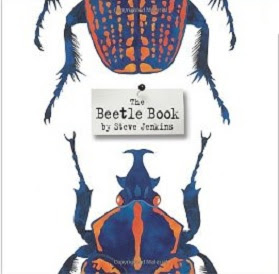There Goes the Neighborhood! The Pirates Next Door: Starring the Jolley Rogers by Jonny Duddle
Matilda lived in Dull-on-Sea, a gloomy seaside town.
Too busy in the summer, and in winter it shut down.
Dull-on-Sea is a dull and boring place, only outdone in seaside soporificity by its French sister-city, Ennui-sur-Mer. Neat cookie-cutter houses located in the exact center of immaculate lawns stretch down the identical streets, a vision of real estate sameness--except for the house next door to Matilda's.
That house had been for sale as long as Matilda's memory stretched back, and Matilda, a different drummer sort, had secret hopes for that house:
She hoped a family would move in, with a girl her age, or maybe...
A boy! A PIRATE boy!
And then, one day a veritable pirate ship on wheels rolls down that sleepy street and pulls into the drive of the vacant house. It's a new family, all right, the Jolley Rogers, complete with peg-legged dog and salty parrot, and best of all, a boy just her age, named JimLad!
It seems even privateers need some downtime in drydock, and the rumor mills of Dull-on-Sea grind into overtime as the town takes in the idea of a set of scurvy buccaneers putting down roots in their sedate city. Back fence gossip buzzes with dire warnings of a pirate takeover of the town:
Before you know it, there'll be more--
We'll all have pirates right next door!
But Matilda and JimLad take to each other like salty seadogs to a seabiscuit. While the rest of the class are giving JimLad, nautically speaking, a wide berth, Matilda invites him to put down anchor in the desk next to her at school, and soon she's, er, showing him the ropes of landlubber life. JimLad himself is grateful and returns the favor by teaching her the ways of the sea.
Just as the restive city is roused to take action against the whole bunch of buccaneers, the Jolley Rogers finish refurbishing their ship, and one morning the town awakens to find them gone. That ship has sailed, all right, but the Jolley Rogers seem to have left a surprising thank-you--a treasure map of Dull-on-Sea with an X marking the spot of mysterious digging in each front yard. Could those part-time citizens have left part of their pirate treasure behind, along with a promise to Matilda from JimLad to cast their anchor again in the cove at Dull-on-Sea?
Jonny Duddle's latest pirate tale, The Pirates Next Door
Labels: Pirate Stories, Stories in Rhyme (Grades Preschool-3)























